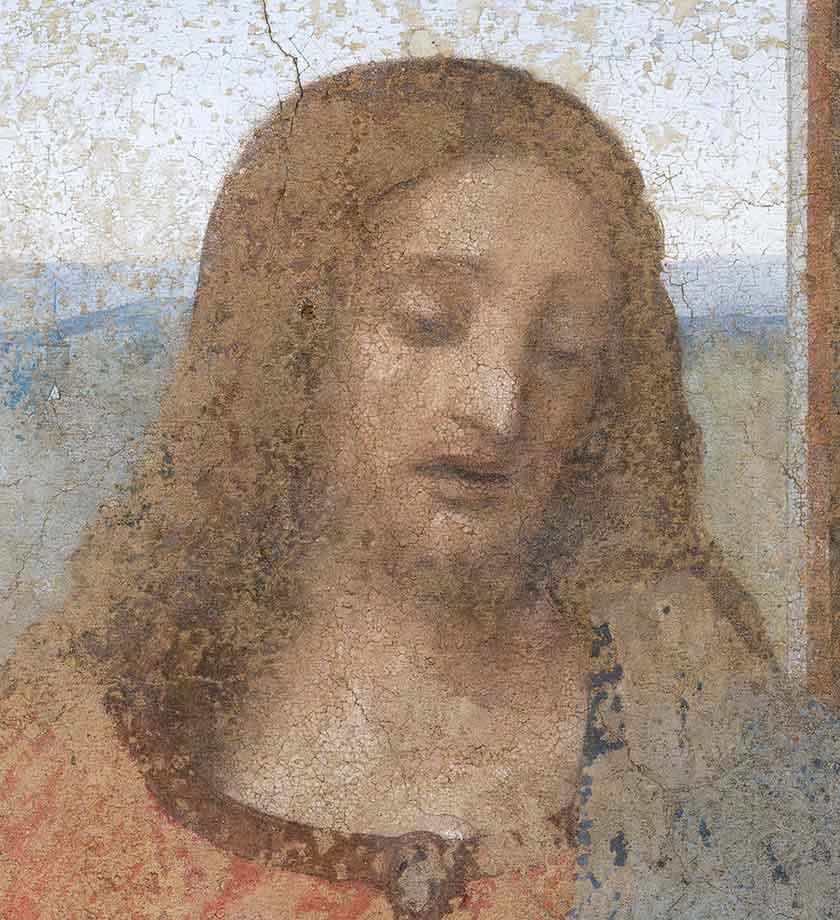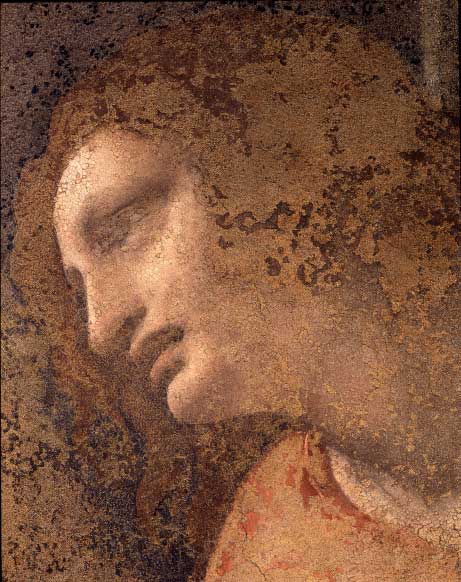The Last Supper, painted between 1494 and the beginning of 1498, is considered perhaps the most important mural painting in the world, “a beautiful and marvelous thing”, as Giorgio Vasari wrote in his Lives of the Most Excellent Painters, Sculptors and Architects, in which he speaks of Leonardo and describes the Last Supper.
Painter, architect, sculptor, engineer, inventor, mathematician, anatomist and writer, Leonardo da Vinci embodied the ideal of the many-sided man dreamed of by the Italian Renaissance.
The Last Supper offers perhaps the most complete testimony to his multifaceted genius, urge to experiment and inexhaustible curiosity. In the period when he was working on the painting, the last decade of the 15th century, Leonardo was also busy with studies of light, sound, movement and human emotions and their expression. We find these interests reflected in the Last Supper, in which, perhaps more than in any other work, Leonardo displayed his concern to depict what he called the “motions of the soul” through postures, gestures and expressions.
Giorgio Vasari, Lives [1550]

Last Supper, Leonardo Da Vinci, detail
Since September 1980 the Last Supper, together with the church and the Dominican monastery of Santa Maria delle Grazie, have been declared a UNESCO World Heritage Site as “a unique artistic achievement, of an exceptional universal value that transcends all historical contingencies”. Among the reasons we can also read that “The Last Supper has exerted a considerable influence, not only on the development of an iconographic theme but also on the destiny of painting” and finally: “it is no exaggeration to say that this painting opened up a new era in art history”.
Preserving this delicate painting and enabling the public to admire it is a daily challenge to the restorers, architects and art historians who look after it and use the finest technologies to ensure that the masterpiece is preserved and passed on to future generations.
| Title | The Last Supper |
| Author | Leonardo Da Vinci |
| Date | 1495-1498 |
| Technique | dry wall-painting |
| Sizes | 460 × 880 cm |
| Location | Refectory of Santa Maria delle Grazie, Milano |

Leonardo did not use the traditional fresco technique to paint the Last Supper and the lunettes. He chose a method that would enable him to paint on dry plaster and work slowly, so as to be able to make changes.
From Tuesday to Sunday:
from 8.15 a.m. to 7 p.m.
(with last admission at 6.45 p.m.)
To guarantee everyone a safe visit,
in this first experimental phase,
the visits last 15 minutes for
a maximum number of 35 people at a time
Reservations are required.
Reservations* for the Cenacolo Museum will open every three months.
(*On Tuesday 18 June, starting at 12 noon, admissions for the August – September – October 2024 will go on sale through the usual purchasing channels)